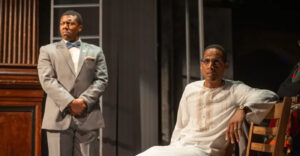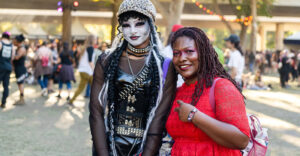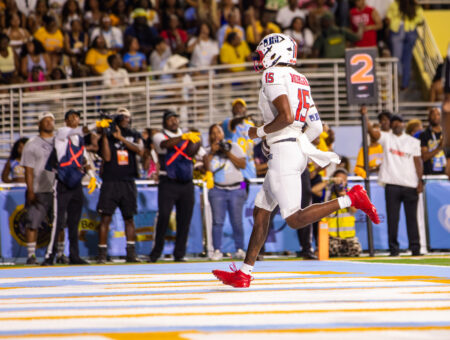A ribbon-cutting ceremony was held on May 21 at 89th and Commercial on the southeast side. It celebrated the opening of Commercial Ave Alfresco, a joint initiative organized by the group South Chicago Parents & Friends along with the city’s Special Service Area 5 commission. Both entities worked together with local artists and businesses, and received grant money to assist their quest to revitalize the neighborhood with outdoor dining, pop-up markets, public art, and outdoor performances.
Located near the mouth of the Calumet River, the southeast side of Chicago, once a seasonal settlement for the Potawatomi people, has been in recent history identified primarily by South Works, the U.S. Steel manufacturing plant built in 1881, which, at its height, employed some 20,000 Chicagoans and helped make Chicago the country’s largest producer of steel. Ashed over by soot and showered in toxic chemicals, the mill neighborhood known as “the Bush” has long been plagued by economic distress, which only increased when the steel mill experienced prolonged shutdowns and finally closure in 1992.
“People think the south side is the Museum of Science and Industry, the South Shore Cultural Center. 71st Street is about the end of the world. Anything past that is, ‘Huh, the Bush? They got plants?’ It’s lost,” says artist Derric Clemmons.
Clemmons, who was born, raised, and continues to live on the southeast side of Chicago, is helping to reenvision the landscape of the southeast side with his Urban Trees project, which transforms industrial steel into colorful landmarks that the city hopes will increase visibility and highlight the vibrancy of a neighborhood often dismissed as, in Clemmons’s words, merely “meat and potatoes, blue collar, low income, struggling.”
Clemmons first gained exposure to art and activism through his uncles, Bill Davis and Steve Davis, both commercial and documentary photographers. “My family was vigilant during the Civil Rights movement—they were members of the PUSH organization led by Jesse Jackson. My aunts and mother were involved in protests, trying to lift their voices. My uncles were photographing the situations that were happening, the turmoil, the upheaval, during Martin Luther King and then Malcolm X. They wanted to capture life as it was developing, especially at a time of upheaval.”
Clemmons pursued photography and fine art in the 70s at Columbia College and spent a short time in the 80s studying in Italy. Yet by the 90s, “I began to look at the landscape of my neighborhood as inspiration. It gave me an opportunity to represent my neighborhood, the southeast side from 79th to 100th Street.”
Now Clemmons, along with Brian Pitt, Mario Mena, and Pierre Seaton—his crew at South Worx Arte Group—are reshaping the landscape of the neighborhood with Urban Trees. “It was all done locally, as a community-based initiative,” he says, describing a process that began in his garage and gradually expanded to the 1,000-square-foot dock of a neighborhood center for youth mentoring.
Clemmons and his team learned to weld and work with steel through local business partners, who have become friends and advisors on the project. Key to the trees are the weatherproof panels that feature work by other local artists, which will rotate in continuous renewal every few years to bring a new crop of talent to the public eye on the 8900 block of Commercial.
“It is a community that is vibrant in its own way,” says Clemmons of his neighborhood. “It is mom and pop struggling to keep their storefronts open. It’s a community of mixed individuals who are for the most part accepting of each other. There are cultural festivals: Mexican, Polish, holiday events. There are dance groups and there are African American drum groups that perform. Yellow kiosks have been installed, which are small pop-up stop-and-shops for businesses to sell out in the open, to get people to stop and shop in those areas and to get people to know that they exist. The sidewalks have been painted in front of various businesses—a 1960s pop art [-style] multicolored display. And the trees are on top of these multicolored locations. So it speaks to the vibrancy of the different cultures here.

“We got Nigerian, we got Somalian, we got Mexican and Puerto Rican, we got European, all mixed up over here. When you walk over here, you’ll see paleta trucks, panaderias, African shops where you can get meat, all kinds of spices from different countries, a Black-owned hat shop. When you walk down the street, you see people who are strong, who don’t want to give up. I see plants grow in some of the worst areas. If a flower can do that, I’m going to try that. The trees are strong structures that are enduring. They represent pushing forward through adversity.”







